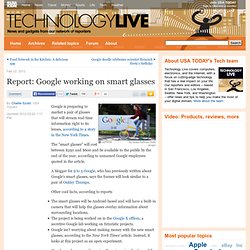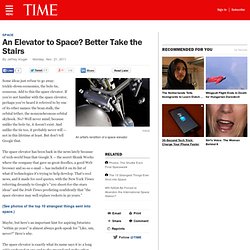

New ultra-battery is the most powerful non-nuclear energy storage ever // Current. To Our Faithful Current.com Users: Current's run has ended after eight exciting years on air and online.

The Current TV staff has appreciated your interest, support, participation and unflagging loyalty over the years. Your contributions helped make Current.com a vibrant place for discussing thousands of interesting stories, and your continued viewership motivated us to keep innovating and find new ways to reflect the voice of the people. We now welcome the on-air and digital presence of Al Jazeera America, a new news network committed to reporting on and investigating real stories affecting the lives of everyday Americans in every corner of the country. You can keep up with what's new on Al Jazeera America and see this new brand of journalism for yourself at Thank you for inspiring and challenging us. Researchers create car that can be steered by thought. The case for outlawing the practice of talking on cell phones while driving got a boost from the latest breakthrough from the innovation labs of Freie Universität Berlin.

German scientists working there have installed a car with new technology that can read the driver's brain waves, thus allowing the car to be steered entirely by thought, reports Science Daily. Needless to say, you probably don't want to be distracted while driving this vehicle. The technology is made possible by commercially available sensors for recording electroencephalograms (EEGs), which are basically the electrical outputs your brain produces while it thinks. Scientists then trained a computer program to distinguish the particular electrical patterns that are produced when a person thinks certain commands, such as "left," "right," "accelerate" or "brake. " Once the training was complete, it was time to take it out for a spin in the real world. Also on MNN: Report: Google working on smart glasses. By Charlie Szold, USA TODAY Updated 2012-02-22 1:17 PM A bicyclist rides by a sign at Google headquarters in Mountain View, Calif.

By Justin Sullivan, Getty Images Google is preparing to market a pair of glasses that will stream real-time information right to its lenses, according to a story in the New York Times. The "smart glasses" will cost between $250 and $600 and be available to the public by the end of the year, according to unnamed Google employees quoted in the article. A blogger for 9 to 5 Google, who has previously written about Google's smart glasses, says the frames will look similar to a pair of Oakley Thumps.
Other cool facts, according to reports The smart glasses will be Android-based and will have a built-in camera that will help the glasses overlay information about surrounding locations. Google employees are discussing the privacy implications of the glasses' camera recording people without their knowledge, according to the Times' report. See photos of: Google Inc. Google X's Space Elevator: Why It Will Not Happen Soon. Some ideas just refuse to go away: trickle-down economics, the bolo tie, couscous.

Add to this the space elevator. If you're not familiar with the space elevator, perhaps you've heard it referred to by one of its other names: the bean stalk, the orbital tether, the nonsynchronous orbital skyhook. No? Well never mind, because unlike the bolo tie, it doesn't exist. And unlike the tie too, it probably never will — not in this lifetime at least. The space elevator has been back in the news lately because of tech-world buzz that Google X — the secret Skunk Works where the company that gave us great doodles, a good Web browser and so-so e-mail — has included it on its list of what-if technologies it's trying to help develop.
Maybe, but here's an important hint for aspiring futurists: "within 50 years" is almost always geek-speak for "Like, um, never? " O.K., so step one is building a cable that's 22,238 miles long. Then, of course, there's the physics. Why?